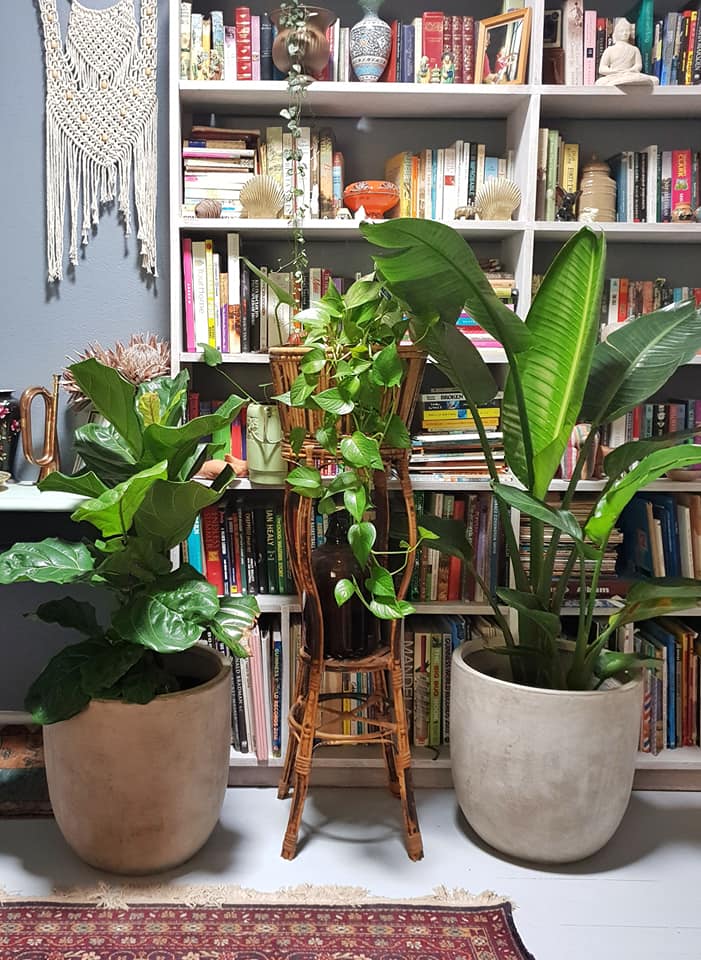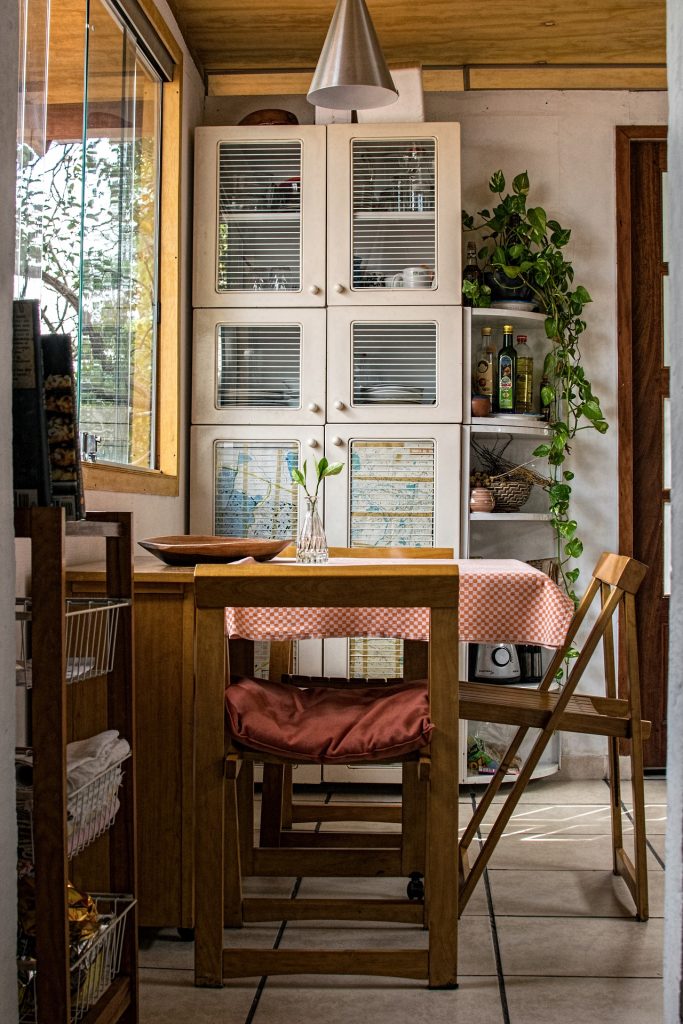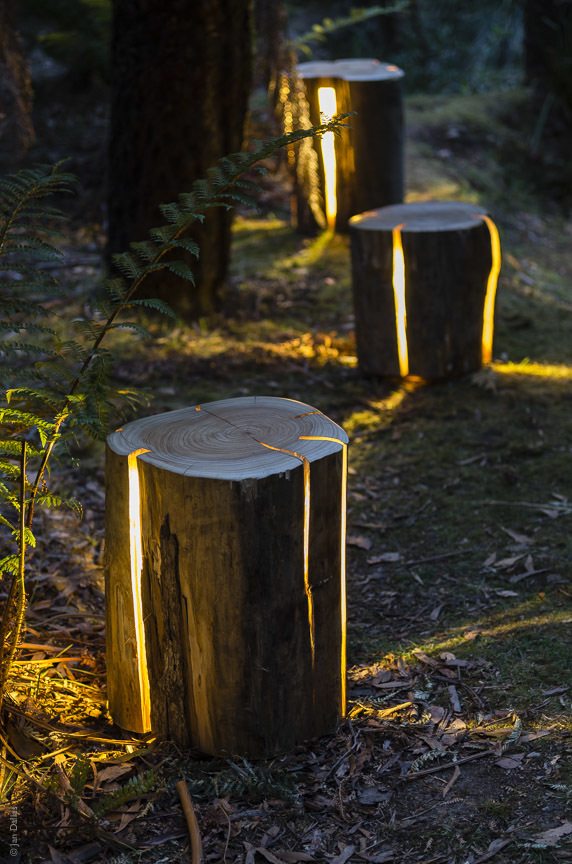Five Real Homes Interior Trends to Embrace

I’m not a believer in trends – insofar as following what’s thrown at you like a sheep. Trends tend to push you to consume, throw away, and consume again – on endless repeat. Many furniture and homeware items are left strewn across the footpaths or dumped in landfills when they break, or are no longer desired. But there is no such thing as ‘away’.
I do believe that we’re swayed by what’s around us, what other people are up to, and our responses and reactions to what’s happening in the world. So in this way, trends can be very positive, especially when they encourage you to refuse, reduce, recycle, reuse, reinvent, rot, repair and recreate. If the idea of other people reducing their carbon footprint, or growing a garden or baking bread, gets you motivated to do the same, then that’s a positive trend. So here are my top 5 real home interior trends to embrace.
Indoor Plants
Indoor plants are hot property and for good reason. They bring the outside inside your home, light up a room, and freshen the air. Some plants, such as the Peace Lily, have been shown to improve the air so much, that they are considered to be little filters of gold. Some people tell me they have a black thumb, but there are a few things that can help you keep plants happy in your home. These include not putting plants into dark rooms or rooms with heating or cooling blasting on them all the time; not over or under watering, and not letting plants sit with wet feet. Have a read here about some of my tips and how I care for mine. Do some research to find the best plants for your lifestyle and home.
 Composting
Composting
The growing interest in living a more sustainable, low waste life, has made composting a hip thing to do! One of the easiest ways to reduce your footprint in terms of waste, is to have a composting system at home. You can add even more value with a worm farm. Food scraps and other plant-based materials, such as paper and cardboard, can be used to feed the worms. They’ll break it down to organic material that can be used as natural fertiliser in the garden.
You can get a wide variety of composting systems from large bins, to creating your own open heap, to bench top systems to have in the kitchen. You can even create a trench composting system right in the garden. We have two bins and also use the green council bin, as the food scraps are sent to their composting system. The problem with adding food scraps to your usual rubbish bin, is that they produce methane when in landfill, which is even more damaging to the environment than CO2. We have a yoghurt container on the windowsill in the kitchen to collect scraps during the day.
Ideas for preventing food waste include:
- Freezing the leftover vegetables, ends of vegetables and skins and using them later for a stock
- Planning your meals—buy only what you need, fresh and in season
- Grow your own—no need for packaging and less waste; no need for food miles and you know your food, where it came from, how it grew and what is in it
- Compost all of your food scraps that cannot be used, and put this back into your garden
- If you don’t have a space for a garden, try a community garden, or talk to your neighbours about sharing a space, or use a container—think outside the square!
 Growing Something of Your Own
Growing Something of Your Own
Growing some of your own food, buying local food in season, and even joining a food co-op, are all growing trends I love. There’s no reason why you can’t grow something of your own! Growing your own food is not only fun, but also super healthy and rewarding. Planting in unusual and upcycled containers is even better! There are so many options for what you can plant your herbs and vegetable into. You don’t need masses of space, because just about anything that can be grown in a garden, can be grown in a container. If you’re tight for space, but want to grow some of your own food, container gardening is perfect.
The rule with container gardening is to ensure the container has drainage holes at the bottom, to allow the water to drain and prevent the roots from rotting. You may want to drill or cut a few holes at the bottom of your container if it doesn’t have any. Ensure you use the right size pot. If you grow beetroot and carrots for example, you’ll need deeper containers and pots, than growing lettuces, kale or Asian cabbages.
Use a saucer or a tray underneath your pots/containers if they are indoors, to prevent water from running everywhere. You can also use a saucer for outdoor pots. Depending on the container, you can use a horticultural liner to hold the potting mix. Make sure your containers are getting enough sunshine, and check the care instructions for feeding and watering needs.
 Perfectly Imperfect
Perfectly Imperfect
Perfectly imperfect things have always been my passion and I know many of you also adore pieces that reflect history. In the now very popular traditional Japanese aesthetic, Wabi-sabi, there’s a focus on the acceptance of transience and imperfection. The idea comes from the Buddhist teaching of the three marks of existence – impermanence, suffering and emptiness or absence of self-nature. Characteristics of wabi-sabi style include asymmetry, roughness, simplicity, economy, austerity, modesty, intimacy, and appreciation of the ingenuous integrity of natural objects and processes – more here.
These things all fit with a love for vintage homewares and furniture, a passion for the found and rescued, upcycled and unique. Think about the peeling paint on a piece of furniture over time, the way that things weather and crackle – these are all part of it. If it encourages a love of the old, the imperfect and the less streamlined beige looks of the last few years, this trend is a keeper.
Handmade & Earthy
As the world gets faster and faster, and smaller and smaller, the trend towards handmade, tactile, rejuvenated and crafted homewares and furniture, are all making a comeback. We’re so connected to everyone and everything, all of the time, that our desire to reconnect with the natural world and have simpler, slower lives, is becoming even stronger. How we design and style our homes, reflects this craving for an offline, hands-on life. I believe that the use of organic materials in furniture and homewares, and the love of age-old traditional handcrafts, will only keep growing in popularity.
Having timber in your home has been shown to be good for your health, and there’s nothing like the tactile nature of wooden floors and furniture. Accessories in timber and other natural materials are better for you and the environment – like the incredible Duncan Meerding Cracked Log Lamps pictured here. Always look for FSC and other certified timbers that have been grown responsibly, and recycled materials.
The handmade includes things you can buy from local makers, fair trade organisations, and those you make yourself, so get crafting – it’s a win win win. Be sure to find out where things are made, how they were made and how the makers were treated in the process – this is really important. Fair trade matters.
I have a qualification in design and colour and many years experience working in the field of sustainable homes.
**update of a post written in 2018 but still as relevant now.


 Composting
Composting Growing Something of Your Own
Growing Something of Your Own Perfectly Imperfect
Perfectly Imperfect
[…] put together the top 5 trends for sustainable homes in 2018 and am following that up with my top trends for sustainable homes in […]